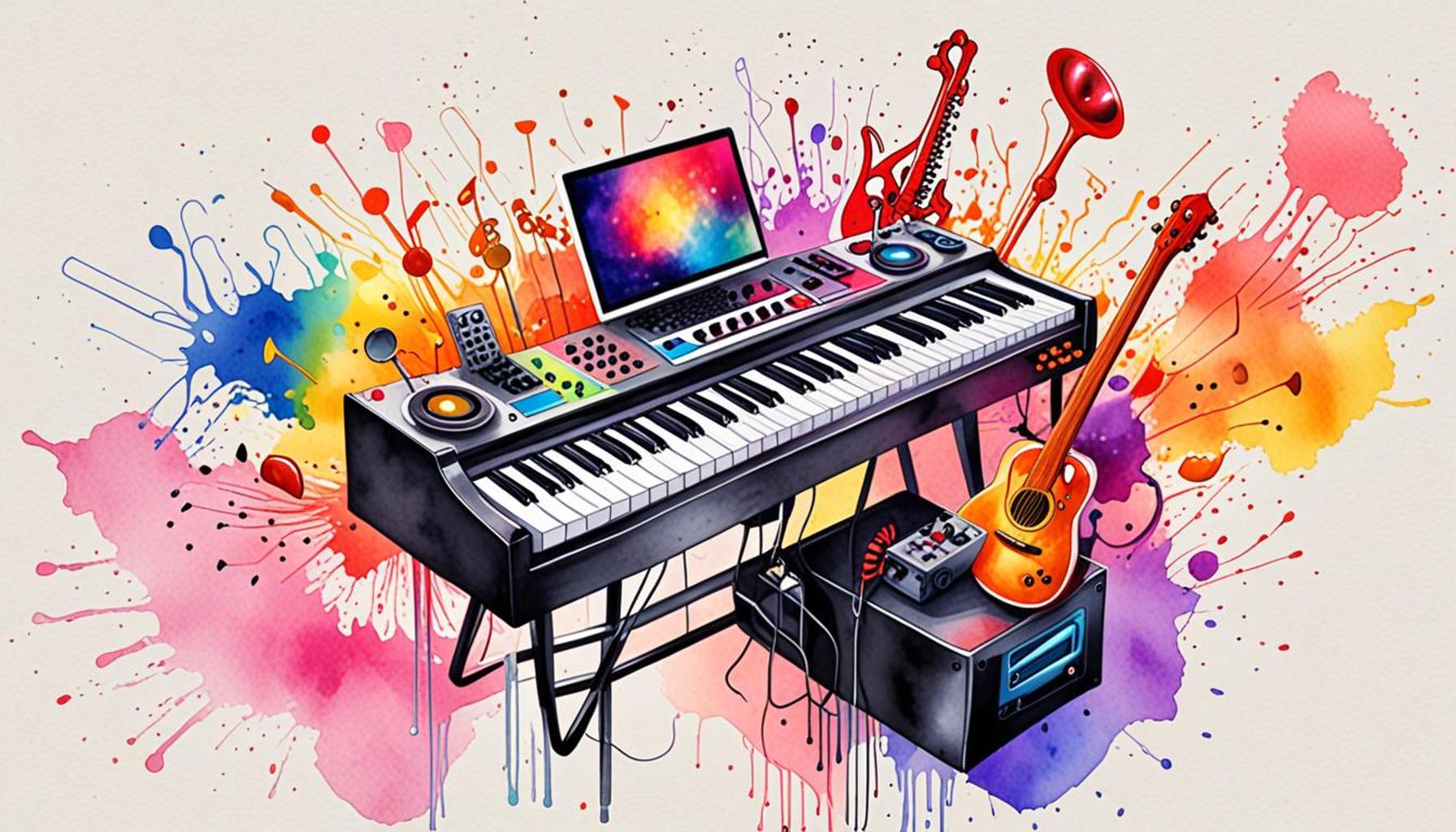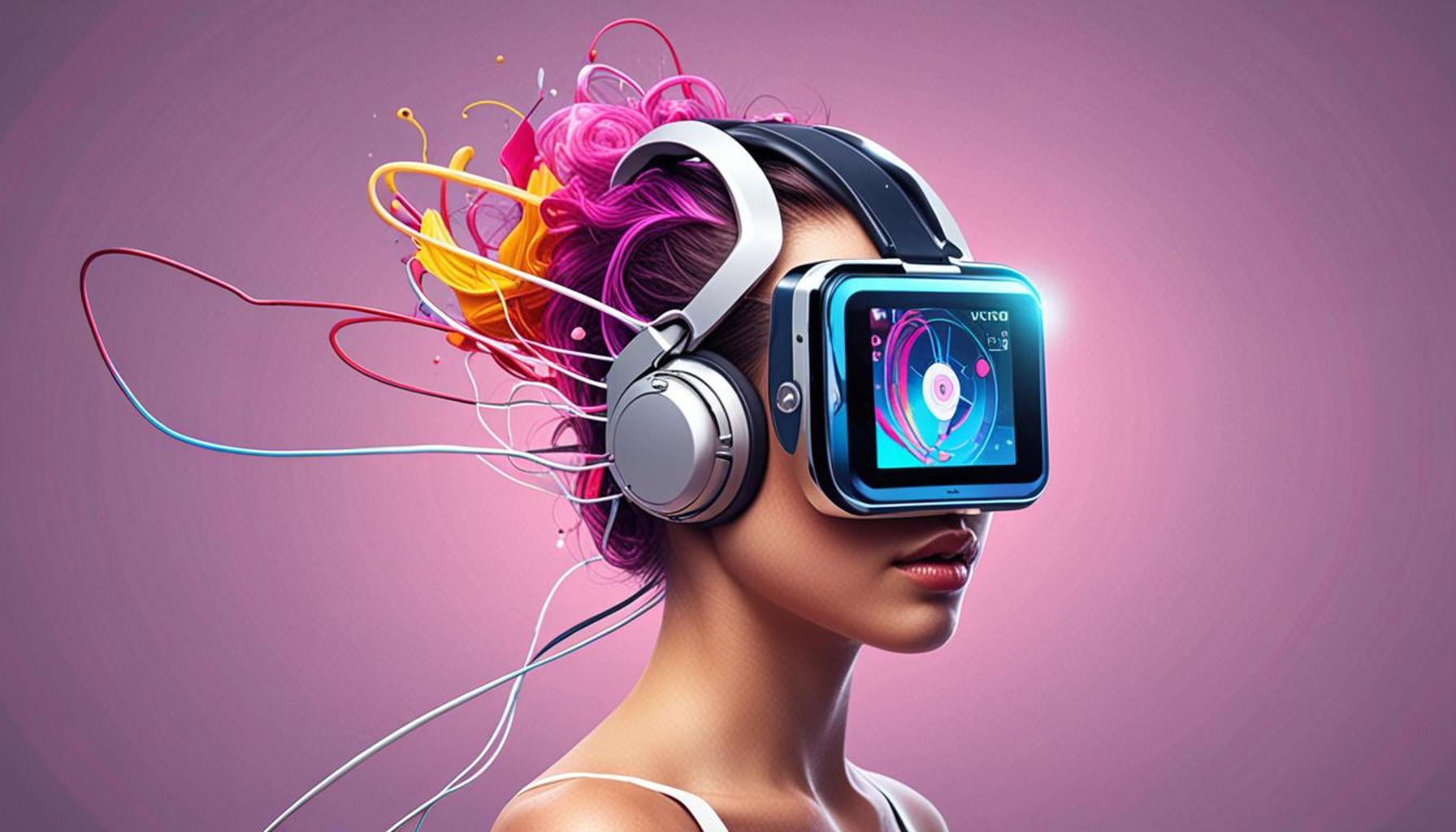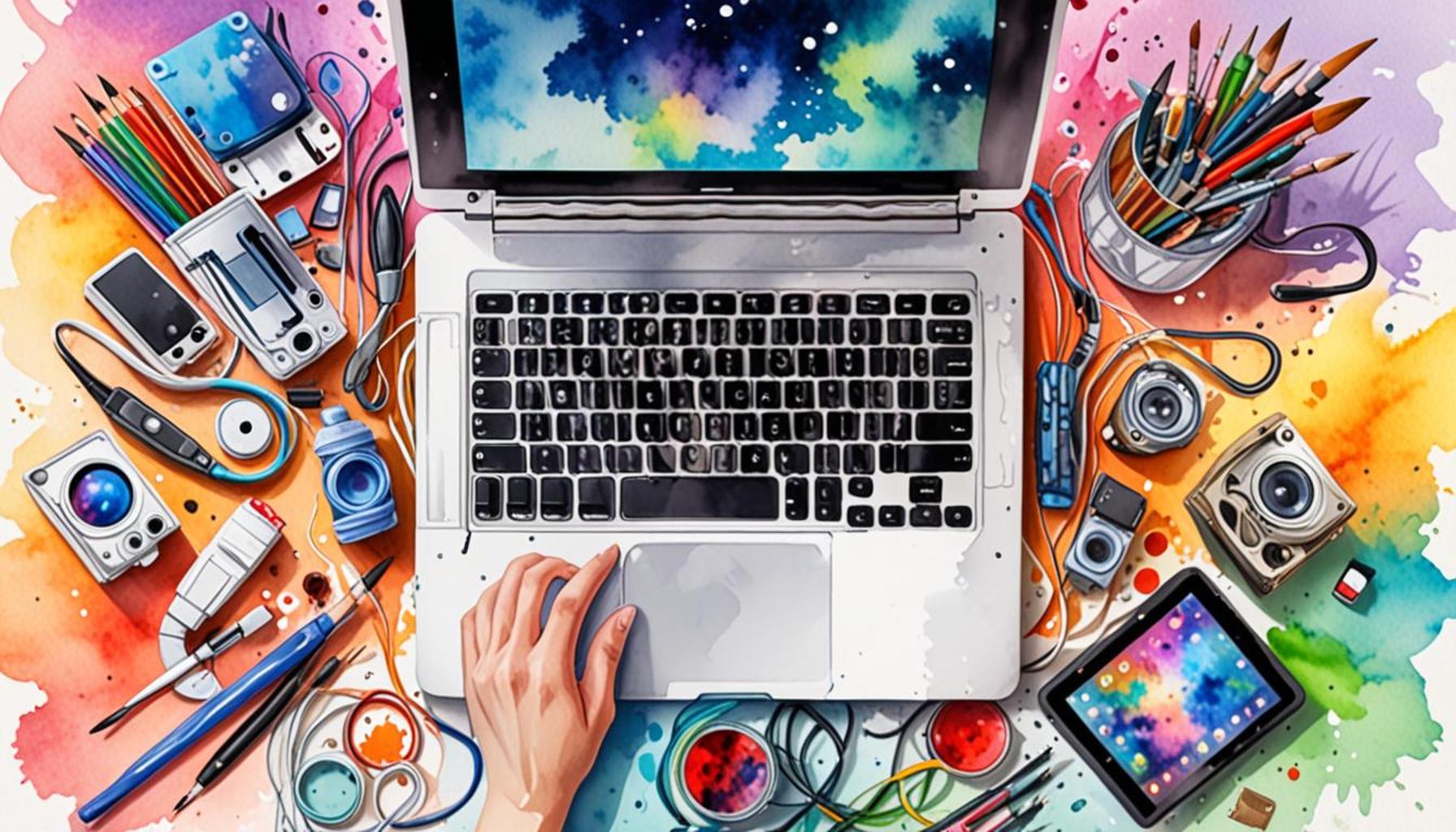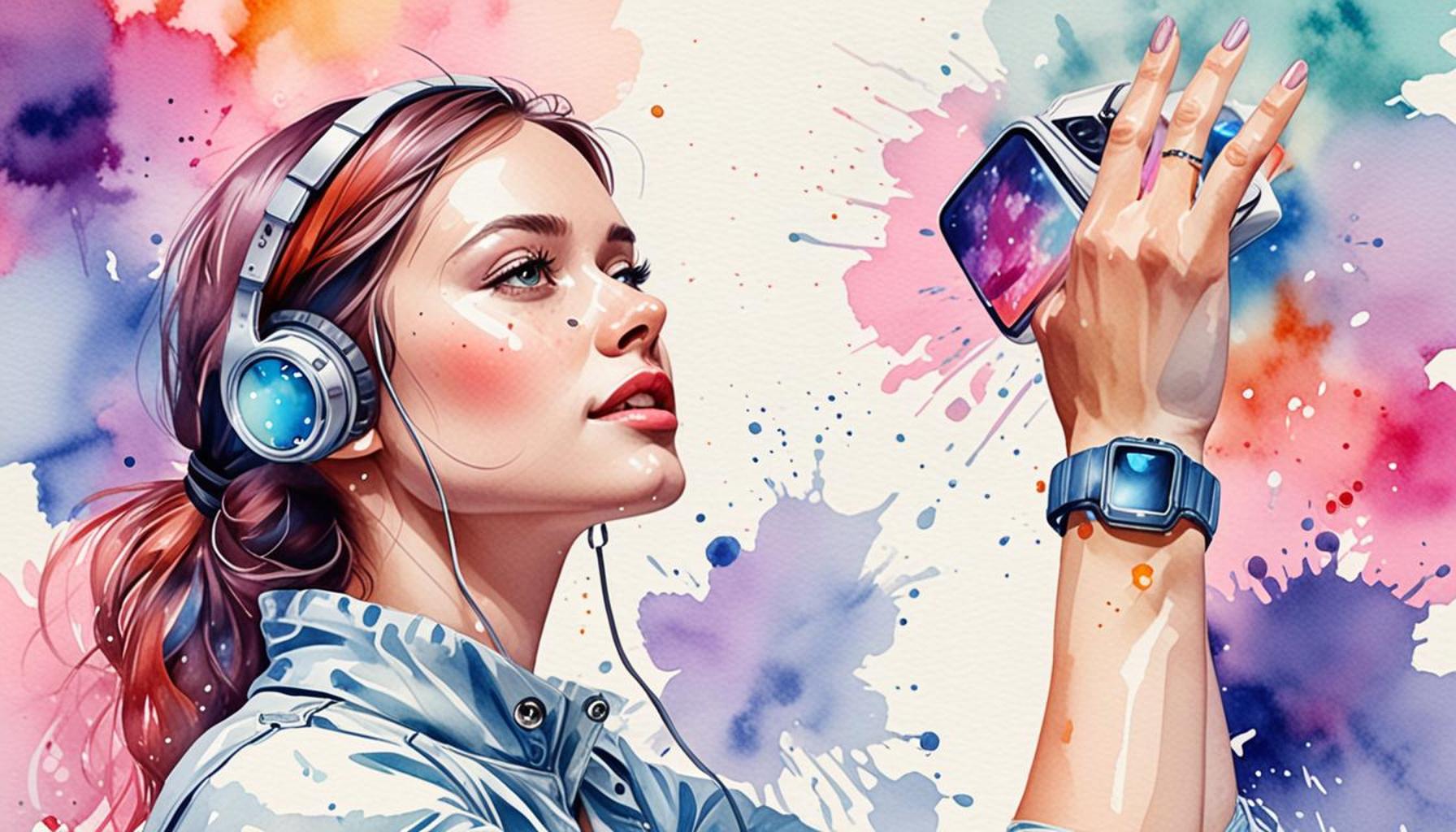Exploring the World of Tech-Infused Music Production and Composition

A New Frontier in Music Creation
As musicians and producers navigate the ever-evolving landscape of tech-infused music production and composition, they are leveraging groundbreaking tools that not only enhance their creative output but also redefine what it means to create music in the modern age. This fusion of technology and artistry is creating opportunities for both emerging and established artists to explore new sonic territories and innovate their craft.
Key Features of Tech-Infused Music Production
The captivating nature of this fusion can be attributed to several pivotal aspects:
- Digital Audio Workstations (DAWs): These powerful digital platforms, such as Ableton Live and Logic Pro, provide musicians with the ability to intricately layer and edit sound. For example, a musician can record a live instrument, mix in digital samples, and apply effects—all within a single interface. DAWs facilitate a seamless creative process, allowing rapid experimentation and revisions.
- Virtual Instruments: The availability of a wide array of synthesizers and sampled instruments has revolutionized sound design. Platforms like Native Instruments offer thousands of sounds at the musician’s fingertips, enabling the creation of anything from lush orchestral arrangements to gritty electronic beats. This diversity in sound significantly expands artistic possibilities.
- AI and Machine Learning: Emerging technologies utilizing AI are changing the way music is composed. Tools like OpenAI’s MuseNet and AIVA are designed to analyze vast databases of music, learning patterns that can then be used to compose original pieces. This capability not only streamlines the songwriting process but also gives artists fresh perspectives on melodies and harmonies.
Accessibility stands out as one of the greatest advantages of this tech revolution. The rise of affordable software and compact home studio setups, including microphones, monitors, and audio interfaces, has democratized music production. Enthusiastic musicians can now produce high-quality tracks from virtually anywhere, whether in their college dorms, bedrooms, or shared studios. This accessibility fosters a diverse music scene where talent and creativity thrive regardless of budget.
Embracing the Future of Sound
Delving into the ever-expanding possibilities of music technology, we invite readers to discover the artists, tools, and trends paving the way for the future of sound. Platforms like SoundCloud and Bandcamp allow independents to share their creations widely, while live streaming has become an essential mode for distributing performances. Engaging with new technology not only redefines how music is created but also enhances how we experience it—ushering in a new era of interactivity and engagement. As these innovations continue to unfold, they promise to sharpen the edge of creativity, sparking curiosity and exploration in this vibrant artistic landscape.
DIVE DEEPER: Click here to discover the benefits of active gardening
Unlocking Creative Potential with Technology
In the realm of tech-infused music production and composition, the tools and technologies at musicians’ disposal have significantly evolved, reshaping how creativity is expressed. Armed with innovative software and hardware, artists can now create intricate compositions that were once conceived only in high-end studios. This transformation has not only elevated the artist’s creative potential but has redefined the entire music-making process.
Enhancements Through Technology
The impact of technology on music production can be seen through various transformative elements:
- Loop and Sample Libraries: Platforms like Splice and Loopmasters provide vast libraries of royalty-free loops and samples. These resources enable artists to access high-quality sounds across genres, helping to inspire new compositions. By incorporating these elements, they can effortlessly blend different styles and cultures into their work, enriching the overall sound.
- Collaboration Tools: Technology has bridged geographical gaps, allowing artists to collaborate remotely. Tools such as Soundtrap and BandLab enable multiple creators to work on a project simultaneously, bringing together diverse talents from different parts of the globe. This enhances the collaborative process, encouraging the fusion of innovative ideas and varying musical influences.
- Online Tutorials and Courses: The internet has opened a treasure trove of learning resources. Platforms like YouTube, Skillshare, and MasterClass offer tutorials and courses on everything from mixing techniques to sound design. This accessibility to knowledge equips aspiring music producers and composers with valuable skills, making it easier to hone their craft and stay current with industry trends.
Furthermore, the integration of technology extends beyond creation; it plays a pivotal role in music distribution. Digital streaming platforms, such as Spotify and Apple Music, have transformed how music reaches audiences. These platforms not only allow for a wider audience reach but also offer analytics tools to help artists understand their listener demographics better. This data informs promotional decisions and encourages targeted marketing strategies that maximize exposure.
The Impact of Technology on Music Genres
The influence of tech-infused music production is evident across numerous genres. In electronic music, for instance, producers harness synthesizers and samplers to create intricate soundscapes that push sonic boundaries. In contrast, hip-hop artists use technology to sample diverse sounds, combining traditional instrumentation with modern beats to craft compelling narratives. Each genre has found its unique way to incorporate technological advancements, resulting in the emergence of new styles and sub-genres.
As we move deeper into the world of tech-infused music composition, it becomes clear that the synergy of creativity and technology is not only reshaping the music industry but also forging connections among artists and audiences in ways never seen before. This ongoing evolution sparks an exciting sense of exploration, inviting musicians to push the envelope and redefine their artistry in the digital age.
| Advantage | Description |
|---|---|
| Access to Advanced Tools | Tech-infused music production offers cutting-edge software and hardware that enhances creativity and sound quality. |
| Collaborative Opportunities | With online platforms, producers can easily collaborate remotely, sharing ideas and projects across the globe. |
In the realm of music production and composition, the incorporation of technology has revolutionized the way artists create and interact with their craft. The first notable advantage, “Access to Advanced Tools,” underscores how tech-infused music facilitates the use of state-of-the-art digital audio workstations (DAWs), plugins, and virtual instruments. These innovations not only optimize the creative process but also allow for a level of precision that traditional methods may lack.Moreover, the second advantage, “Collaborative Opportunities,” highlights the power of connection. Thanks to digital platforms, musicians can synchronize ideas and compositions through the internet, allowing for seamless collaboration regardless of physical location. This not only broadens the artistic community but also enhances the diversity of sound and style in contemporary music production, making it essential for emerging and seasoned artists to explore these technologies.
DIVE DEEPER: Click here to explore the world of creative photography
The Role of Artificial Intelligence in Music Creation
As technology continues to advance, one of the most notable innovations in the field of tech-infused music production is the emergence of artificial intelligence (AI). AI algorithms are redefining the music creation process, enabling musicians to explore creative avenues previously unimagined. Tools like OpenAI’s MuseNet and AIVA (Artificial Intelligence Virtual Artist) utilize machine learning to compose music in various genres, ranging from classical to jazz, reflecting the intricate complexities of human composition.
AI as a Creative Collaborator
Rather than replacing human artists, AI acts as a collaborative partner in the creative process. Musicians can input themes or styles, and AI generates melodies, harmonies, or even entire arrangements in real-time. This synergy encourages artists to step outside their comfort zones, experimenting with chord progressions and song structures that may not have occurred to them otherwise. Moreover, AI-generated music can serve as a launching pad for inspiration, allowing producers to develop their unique soundscapes by building upon AI’s creations.
The Democratization of Music Production
The integration of technology in music composition is also fostering a more inclusive environment for aspiring musicians. The barriers to entry for music production have been significantly lowered due to the availability of affordable software and hardware. Streaming platforms like SoundCloud and Bandcamp empower independent artists to distribute their work without the need for traditional record deals, enabling them to nurture and grow their personal brands. The success stories of artists such as Chance the Rapper and Billie Eilish exemplify how technology can democratize the industry, allowing musicians to gain recognition on their terms.
Virtual Reality and Immersive Experiences
Innovations in virtual reality (VR) and augmented reality (AR) are creating immersive experiences that can elevate music production and engagement. Tools like Oculus Venues and platforms like MelodyVR allow artists to produce live concerts in virtual environments, offering audiences a unique experience that transcends physical limitations. These technologies are giving rise to new forms of artistic expression and interaction, as audiences can explore music in 360-degree settings, fostering deeper connections between the artist and listener.
Data-Driven Innovations in Music
Furthermore, the role of data analysis in music production cannot be overlooked. With access to vast amounts of listener data, artists are better equipped to cater their work to audience preferences. Tools like Echo Nest, now part of Spotify, analyze songs’ sonic characteristics and listener habits to inform artists about trends and preferences. This data-centric approach helps musicians make informed artistic decisions and craft songs that resonate with their audience, amplifying their chances for success in today’s competitive industry.
As artists continue to embrace these evolving technologies, the future of music production and composition remains an exciting frontier. The fusion of human creativity with advanced technological features invites an endless array of possibilities, challenging musicians to redefine their artistry and expand their creative limits. This burgeoning landscape not only influences the sonic landscape but encourages an ever-evolving dialogue between artists and their audiences, paving the way for the next wave of musical innovation.
DISCOVER MORE: Click here to delve into the evolution of video editing tools
Conclusion: The Future of Music in a Tech-Driven Landscape
As we navigate the dynamic landscape of tech-infused music production and composition, it is evident that technology is not merely a tool but a transformative force reshaping how music is created, distributed, and experienced. The integration of artificial intelligence, virtual reality, and data analytics is empowering artists to transcend traditional boundaries, allowing for innovative collaboration and artistic expression. Each technological advancement invites musicians to experiment and invent, uncovering a wealth of new genres and styles that reflect the diverse tapestry of human experience.
The democratization of music production, fueled by affordable tools and platforms, ensures that creativity is not confined to a select few. This environment fosters an artistic community where aspiring musicians can gain recognition and chart their own paths, as illustrated by trailblazers like Chance the Rapper and Billie Eilish. Meanwhile, immersive technologies offer audiences a fresh way to engage with music, creating a more connected and interactive experience.
As we look forward, it is crucial to recognize the importance of balancing technological innovation with the authenticity of human artistry. While data-driven insights provide valuable guidance, the emotional connection that music elicits remains at the heart of its power. The challenge for future musicians lies in harnessing technology responsibly while preserving the emotional depth that makes music a universal language. In this ever-evolving world, those willing to explore and adapt will find themselves not just as participants but as pioneers in the revolutionary journey of music production and composition.


